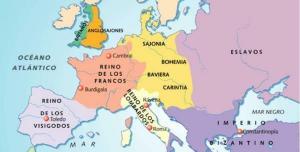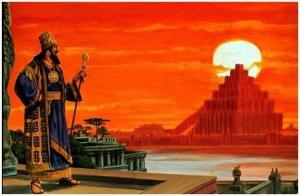Homo habilis: physical and cultural characteristics

Image: Bradshaw Foundation
The human being has an enormous amount of ancestors, a series of species different in many things from us, but without their evolution it would have been impossible for the human being to appear. One of the most recognized beings in human evolution is Homo habilis, and that is why in this lesson from a PROFESSOR we are going to talk about physical and cultural characteristics of Homo habilis.
Homo habilis was a hominid that existed between 2.4 million and 1.6 million years ago in the past, coinciding in part of these years with Homo erectus and Homo rudolfensis. It lived especially in the African continent, being there where the first fossil remains that proved its existence were found.
Its name as "habilis" comes from the word "skilled" and it is because it is believed that he was capable of creating lithic instruments, possessing the ability to make stone instruments and also to manipulate certain objects.
The origin of the species can be found in Africa, situated between the beginning and the middle of the Pleistocene period, in the Gelasian and Calabrian ages. A period characterized by an extremely dry climate, with hardly any rainfall, but Homo habilis was able to adapt to this medium, not going to other continents, unlike other species such as Homo erectus that did leave looking for a place without drought.
The importance of Homo habilis lies in the fact that until its discovery there was a great gap in the evolutionary line of the human being, since it was considered that no species existed amongAustralopithecus and the Homo erectus. The discovery of Homo habilis changed this thinking, filling the gap that existed between both species, and being considered by many as the oldest ancestor of the human being.

Image: Slideshare
Like all human ancestors, Homo habilis had a series of physical characteristics that differentiated from other ancestors, some that later evolved, and others more similar to those that we possess Humans. Even with everything, it is considered one of the most physically different ancestors from the human being.
Some physical characteristics of Homo habilis are as follows:
- Rounder skull than that of the previous species.
- Sword-shaped incisors, called espadiformes, which allowed them to cut and tear the meat easily.
- The molars were very large, and were protected by a thick enamel.
- The incisors of Homo habilis had no diastema, that is, the small gap that exists between two teeth.
- The "Great hole" it was located more towards the center of the head.
- The face was flatter than in the australopithecus.
- His height was somewhat under five feet tall, weighing just over 50 kg in the case of men. In women the normal height was one meter, and the weight was little more than 30 kilos.
- The fingers were curved, both in the hands and in the feet, because they still used the trees.
- The cranial capacity was greater than in other species.
- Parturitions lasted less than in previous species.

Image: Slideshare
To conclude this lesson on lthe characteristics of Homo habilisWe must talk about the main customs that characterized this species, commenting on different areas within its life, such as food or its way of life. Some of these characteristics are the following:
- Most of your feeding was based on meat, for which his sword-shaped teeth were very useful. Even so, their diet was very varied, also eating vegetables, insects and roots.
- It is not known for sure if they were hunters or scavengers, that is, if they hunted their prey or if they fed on the remains of animals they found.
- They were able to manufacture and use a wide variety of stone tools, which they used to hunt and to perform other day-to-day actions.
- Their society followed a hierarchy, being led by an alpha male, while the rest were below and divided into groups depending on the task they will perform.
- They began to live in caves, because the African drought was causing the disappearance of a large part of the trees.
- Already could communicate by sounds, although they were not yet able to use language.
- They knew fire, although they weren't able to use it.

Image: Slideplayer



